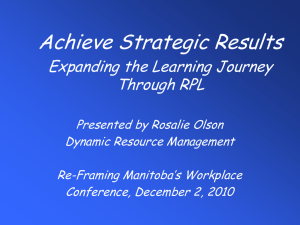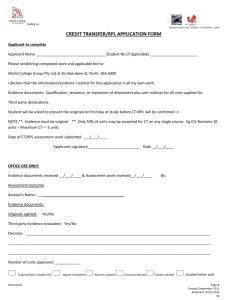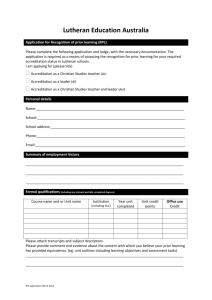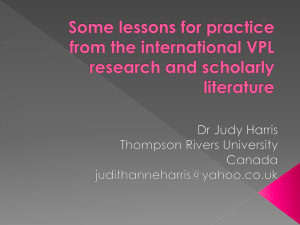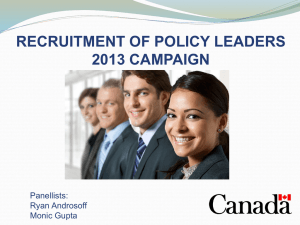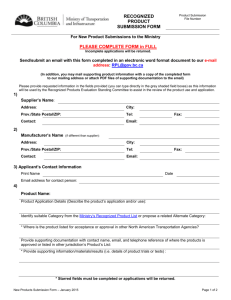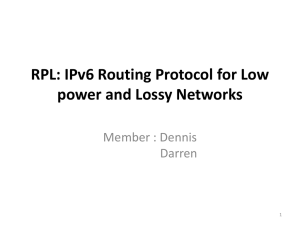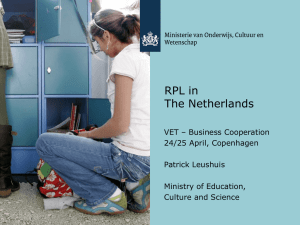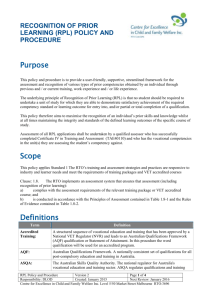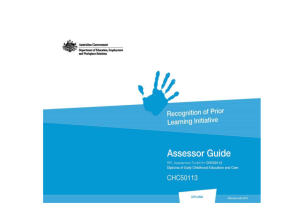Certificate III in Early Childhood Education and
advertisement
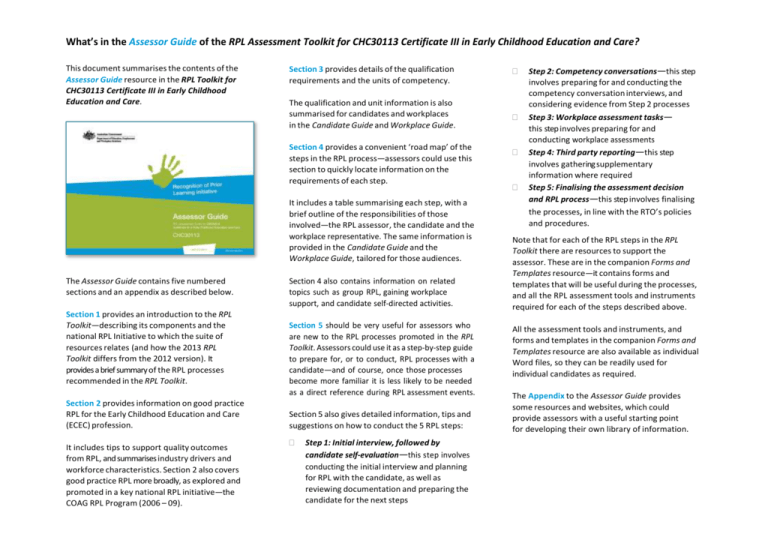
What’s in the Assessor Guide of the RPL Assessment Toolkit for CHC30113 Certificate III in Early Childhood Education and Care? This document summarises the contents of the Assessor Guide resource in the RPL Toolkit for CHC30113 Certificate III in Early Childhood Education and Care. Section 3 provides details of the qualification requirements and the units of competency. The qualification and unit information is also summarised for candidates and workplaces in the Candidate Guide and Workplace Guide. Section 4 provides a convenient ‘road map’ of the steps in the RPL process—assessors could use this section to quickly locate information on the requirements of each step. It includes a table summarising each step, with a brief outline of the responsibilities of those involved—the RPL assessor, the candidate and the workplace representative. The same information is provided in the Candidate Guide and the Workplace Guide, tailored for those audiences. The Assessor Guide contains five numbered sections and an appendix as described below. Section 1 provides an introduction to the RPL Toolkit—describing its components and the national RPL Initiative to which the suite of resources relates (and how the 2013 RPL Toolkit differs from the 2012 version). It provides a brief summary of the RPL processes recommended in the RPL Toolkit. Section 2 provides information on good practice RPL for the Early Childhood Education and Care (ECEC) profession. It includes tips to support quality outcomes from RPL, and summarises industry drivers and workforce characteristics. Section 2 also covers good practice RPL more broadly, as explored and promoted in a key national RPL initiative—the COAG RPL Program (2006 – 09). Section 4 also contains information on related topics such as group RPL, gaining workplace support, and candidate self-directed activities. Section 5 should be very useful for assessors who are new to the RPL processes promoted in the RPL Toolkit. Assessors could use it as a step-by-step guide to prepare for, or to conduct, RPL processes with a candidate—and of course, once those processes become more familiar it is less likely to be needed as a direct reference during RPL assessment events. Section 5 also gives detailed information, tips and suggestions on how to conduct the 5 RPL steps: Step 1: Initial interview, followed by candidate self-evaluation—this step involves conducting the initial interview and planning for RPL with the candidate, as well as reviewing documentation and preparing the candidate for the next steps Step 2: Competency conversations—this step involves preparing for and conducting the competency conversation interviews, and considering evidence from Step 2 processes Step 3: Workplace assessment tasks— this step involves preparing for and conducting workplace assessments Step 4: Third party reporting—this step involves gathering supplementary information where required Step 5: Finalising the assessment decision and RPL process—this step involves finalising the processes, in line with the RTO’s policies and procedures. Note that for each of the RPL steps in the RPL Toolkit there are resources to support the assessor. These are in the companion Forms and Templates resource—it contains forms and templates that will be useful during the processes, and all the RPL assessment tools and instruments required for each of the steps described above. All the assessment tools and instruments, and forms and templates in the companion Forms and Templates resource are also available as individual Word files, so they can be readily used for individual candidates as required. The Appendix to the Assessor Guide provides some resources and websites, which could provide assessors with a useful starting point for developing their own library of information.
